Hongkong 香港
Tuesday, January 3, 2012
- Silkroad
My days spent in Guangzhou, especially with long rambles through the city. After two months in the desert, you feel like jumping into another world. A lot of traffic, noise, street vendors, skyscrapers, tropical parks, mild climate and huge fish markets can be found here.
Guangzhou is a city in the south of the People's Republic of China with 3,152,825 inhabitants in the geographical urban area and 7,950,000 inhabitants in the administrative urban area. It is the capital of the province Guǎngdōng (also known as "Canton Province") and a major industrial and commercial location. The city's landmark is a statue of five goats. It is believed that the area around Guangzhou dates back to the 9th century BC. Was settled in Chr. During the Qin Dynasty, the city was the capital of Nanhai Prefecture.Long time, Guangzhou was the starting point of the so-called "Silk Road on the sea". By sea, the city maintained trade relations with South Asian countries such as India and Arabia.
I was especially fascinated by the temples. Most can be visited for a small contribution and the monks and nuns while prayer or reading watch.
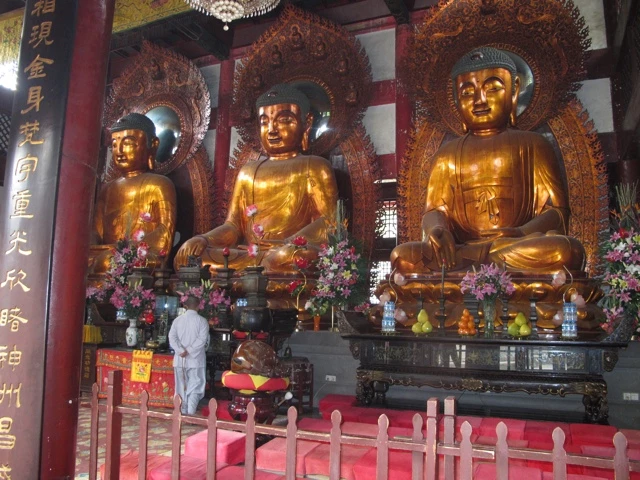
The entrance to the temple is guarded by four demons. People are burning heaps of incense in front of the statues. As a result, the whole system is usually wrapped in a gray veil.
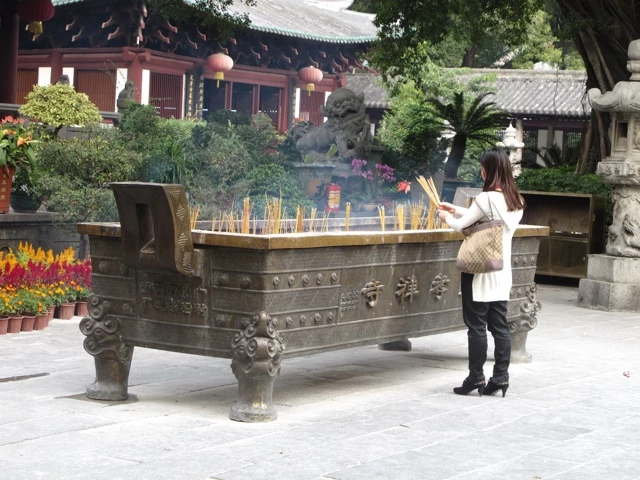
In one of these temples, I met Jay. He studied marketing near Shanghai and worked for a Chinese car brand for one year in Iran. We walked half-day through the city haphazardly and exchanged experiences about our Iran experiences. He got a few extra days off from his company as a bonus and now visits his former fellow students here in Guangzhou.
The only mosque in the city is officially open only to Muslims. As we stood in front of it, three men came to the entrance and took us inside. They told the guard at the gate that we were friends of Islam. That's how it goes! One of them is a Turk, who grew up in Germany and came here after studying in France. He was thrilled to be able to speak French with me and showed us the whole mosque. This visit reaffirmed my and Jay's views on the Muslims with their open and hearty hospitality. We arranged to meet again for the next day. He introduced me to his friends. Together we visited the mausoleum of the Nanyue King.

It was discovered in 1983, when surprisingly workers found an old royal tomb during construction for a shopping mall. It contains the tomb of Zhao Mo, the second king of Nanuye and grandson of the legendary Qin general Zhao Tuo, whom the Emperor in 214 BC. BC sent to the south to quell the riots there. Zhao Tuo established a sovereign state, the Kingdom of Nanuye. Guangzhou was his capital.

For me it was also exciting to hear the attitude of Jay to his country. He loves his job. It only annoys him that he can not live his life creatively. Everything is censored in his opinion. He hopes to get a chance to work abroad with his work in Iran. He would prefer a country where human rights are respected. After visiting the museum we walked through the Yuexiu Park and said goodbye.
On Sunday it was finally time. I deposited my bike and most of the luggage in the youth hostel and took the bus to Hong Kong. The border crossing was completely uncomplicated. In Hong Kong you can stay for 90 days without a visa. What a luxury! After 5 hours I stood in front of the hostel on Hong Kong Island. Guangzhou was already a huge city for me. But Hong Kong is far from exhausting.
With a hungry stomach, I ran into the first supermarket and barely trusted my eyes. You can buy food from all over the world here. Even chocolate, cheese and yoghurt from Switzerland. Of course everything has its price. That did not really matter to me at that moment. My palate experienced a really culinary high. A nice feeling.
On Monday we went to the visa office. Although an hour before the opening a huge snake formed at the entrance, everything was pretty quick. The lady just wanted to issue me a thirty-day visa. There is nothing you can do. Afterwards I visited the Swiss consulate in Central Placa. It is located on the 62nd floor. There is a high speed lift to get there.
The view of the city is breathtaking and the lady from the consulate even spoke Swiss German. How nice! After picking up my new China Visa the next day, I went directly to the Mongolian consulate. The staff helped me personally by completing the application form. However, he did not want to issue me 90 days visas. You can get at most 30 days. After a long explanation, he agreed to make an application for me in Ulanbataar. He will notify me by mail. Slightly depressed, I left the consulate. My hands were tied.
I could only wait. So I spent the next few days mainly waiting and forging new travel plans. On Friday, the dear man had still heard nothing. That was the death message for my Mongolia project. I decided to put my plan B into action: off to Southeast Asia! It's much warmer down there anyway. The cold can me!
On Saturday it was finally time. Exactly on Heillig evening ended my family after more than ten hours flight in Hong Kong. It was beautiful to see everyone after so long. Everyone was pretty tired from the long flight. After a visit to the Indian restaurant, it went directly back to the hotel. Slightly recovered, we took a walk through Kowloon the following day. From Star Ferry Pier you have a great view of Hong Kong Island. From the International Commerce Center we enjoyed the sunset on the container harbor. My daily highlight was the subsequent meal at the Italian. Right pizza with caprese salad. Heavenly!
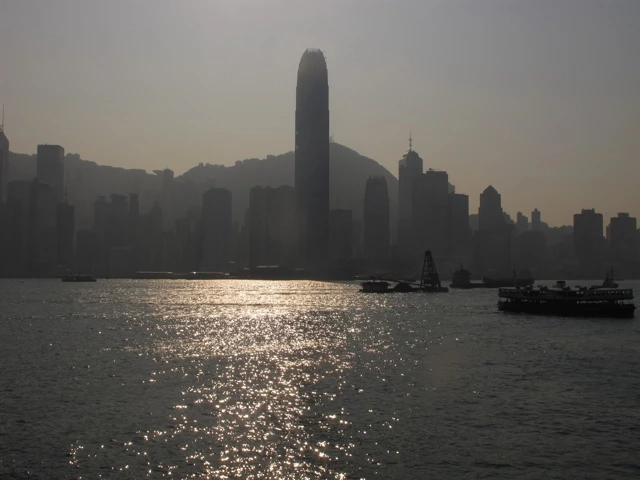

To stimulate the digestion we walked on the way home through the night market on Temple Street. From 21:00 clock the street turns into a huge market where there are many things to buy.
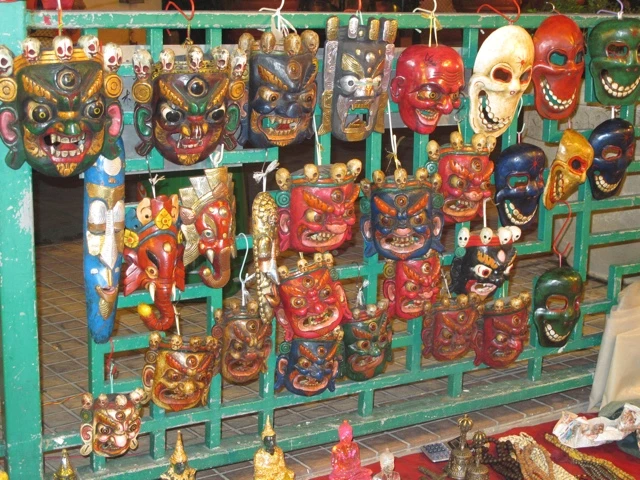
Hong Kong is the name of a metropolis and special administrative area on the south coast of the People's Republic of China. The Central district in the north of the island of Hong Kong is the financial and business center of the city. The most populous district and cultural hub is the Kowloon peninsula south of the New Territories. The territory located at the mouth of the Pearl River on a peninsula and 262 islands was a British Crown Colony until June 30, 1997, and was returned to China on July 1, 1997, as per contract.
As part of Deng Xiaoping's doctrine One Country, Two Systems, Hong Kong's democratic market system remains at least 50 years apart from the authoritarian socialist system of the People's Republic of China, securing Hong Kong's role as one of Asia's financial centers.
While this autonomy allows Hong Kong to have its own laws, tariffs and currency, the Beijing government often intervenes in domestic politics. For example, the Chief Executive is elected by an election committee appointed by the People's Republic of China. Of the 1,104 km² area only about 25% are urbanized. This is mainly due to the very mountainous relief with many steep slopes; only in the north of the New Territories are there larger levels. The highest point is the Tai Mo Shan with 958 m, the Victoria Peak is at 552 m the most famous mountain in Hong Kong.
Hong Kong is the third largest metropolitan area in the People's Republic of China in terms of population. The populated territory of Hong Kong is one of the most densely populated areas in the world after Monaco, with around 16,000 inhabitants per square kilometer, with the population density of the entire territory still at around 6,700 inhabitants per square kilometer.
Over the last 60 years, the population has risen by a factor of twelve (from 600,000 in 1945 to 7 million in 2005) and thousands of times over in 160 years (from 7,500 in 1841), mainly due to immigration from China. Although the Chinese one-child policy is not in Hong Kong, the number of children per woman is only 0.9, the second lowest in the world before Macao, also a special administrative region of China. Population growth is currently around 0.8% (2005), mainly due to immigration from China; Average life expectancy is one of the highest in the world at over 80 years.
Hong Kong is considered one of the highest cost of living in the world, according to the 2009 Forbes list of World's Most Expensive Cities To Live.
The population of Hong Kong has had to settle for decades with very little housing.
1699 reached the British East India Company for the first time to China. In 1711, a firm trading base was established in Guangzhou.
When the British began importing opium to China, it led to the first opium war and finally to the occupation of Hong Kong by the British in 1841. A year later, the area was officially ceded by the Nanking Treaty from China to the occupiers, making Hong Kong's route to the British Crown colony was leveled in 1843. In 1860, the cession of Kowloon followed and on June 9, 1898, the area north of Kowloon to the Shenzhen River (the New Territories) and another 235 islands was leased for 99 years to ensure the supply of the Crown Colony with food and water and the area militarily secure.
The liberalization of trade, which had been enforced after the Opium Wars, made Hong Kong an important free trade area in East Asia.
On July 1, 1997, the People's Republic of China took control of Hong Kong. Since then, Hong Kong has been a Special Administrative Region with a high degree of autonomy.
The two official languages of Hong Kong are English and Cantonese, which belongs to the Chinese languages and is written in Chinese script. In Hong Kong, however, as in Taiwan and Macao, unlike China and Singapore, traditional characters are used. In addition, there are characters that are used exclusively in Hong Kong. In Hong Kong, almost every religion is practiced. The Chinese population is dominated by Buddhist and Confucian beliefs; more than 10% of the population (mostly ethnic Chinese) is Christian. Accordingly, there are also a large number of religious sites of all different worldviews.
On time at 10:00 clock we were on Monday at the pier. On a traditional boat we took a tour through the huge harbor and the many bays. Many fishermen live on their houseboats throughout the year. During the typhoon season from April to October, boats are usually housed in a safe harbor. In addition to all the skyscrapers and fishing boats, I felt like an ant in the garden.



After a small refreshment in the restaurant, a bus drove us to Lantau Island, where we took the gondola up to Ngong Ping. There is 500 meters above sea level. the temple complex Po Lin with the bronze Tian Tan Buddha statue. The largest statue of a seated Buddha in the world under the open sky, to which 260 steps lead up.


From there, it went down to the beach in the small fishing village of Tai O. The smell of shrimp rises already in the parking lot. It is especially famous for its shrimp paste.
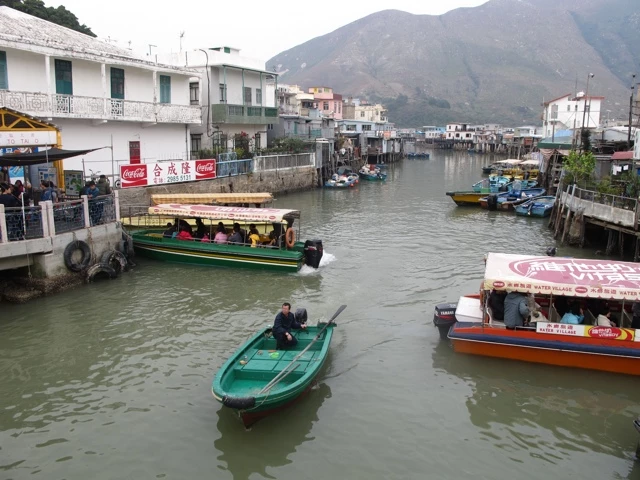
The ferry took us back to Central in the evening. My mother had reserved a single room for me. With TV and private bathroom. I enjoyed this luxury to the fullest. The good TV program made for sleepless nights. You have to take advantage of the situation. Right on the corner of our hotel was a Starbucks Coffe. The stop there soon became our new morning ritual. In between, we also made a visit to the breakfast buffet in the hotel.
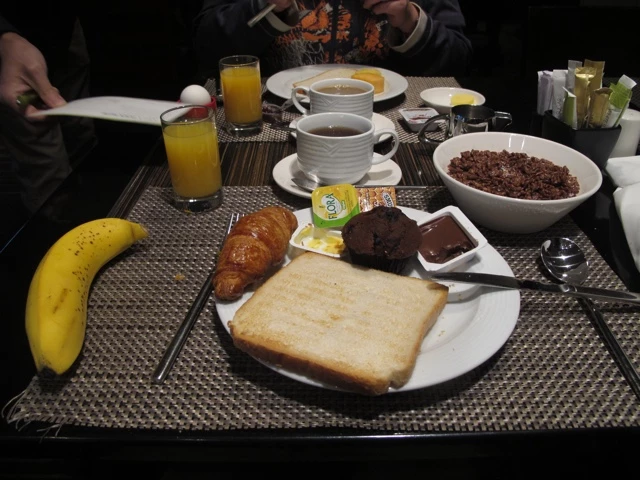
With lots of caffeine in the blood, we set off to explore the northern part of Kowloon the next day. First came the jade market. There are all kinds of jade products available in all colors. Action is also part of this. After all the countless bazaars and markets in the Middle East and Central Asia, you're pretty much in the business of buisness.
A little further northeast is the flower market. Huge, beautiful orchids and tropical flowers that I've never seen before can be seen here. Directly behind it comes the bird market. The birds are kept in enormously small cages. Flying is impossible in it. We all liked the way the animals are treated, this market does not particularly suit us.


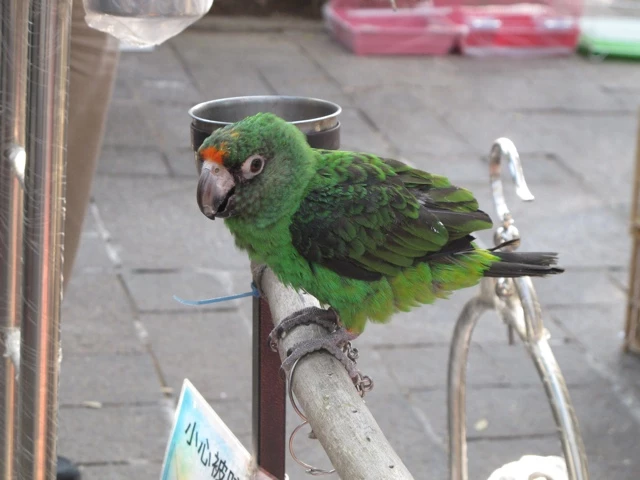
My culinary delights came this evening. We visited the Swiss Chalet Restaurant. Max Liechti, the owner, invited us to the bar for a delicious fondue with fresh quelles and Rivella. He came to Hong Kong as the head chef over twenty years ago. He bought the entire inventory of the restaurant from his former employer and rebuilt it at a new address. After 9 months without Swiss cuisine, this was just awesome for me. With a really big cheese lump in the stomach it went back to the hotel.

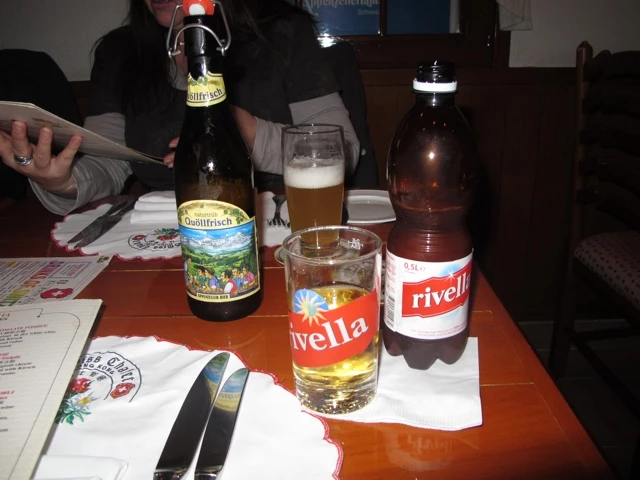
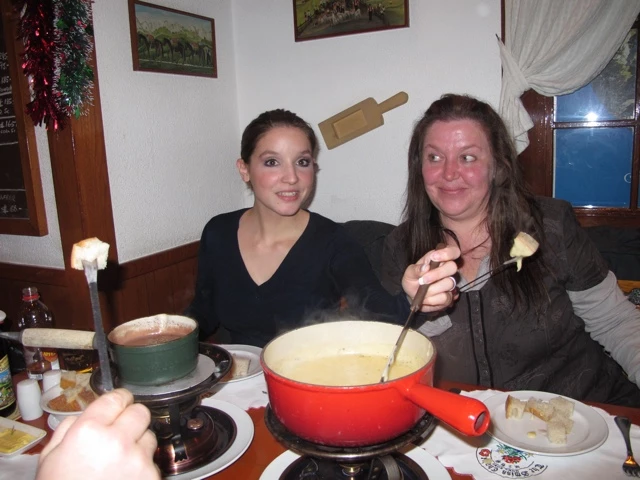
Hong Kong is a shoppers' paradise, especially for tourists from Japan, due to its low taxes and numerous sparkling shopping malls. For a long time, the city was also considered an ideal place for the cheap purchase of electronics items, which has long been relativized.
We rushed into the shopping center the following day in Causeway Bay. The shopping malls are sometimes huge and the Chinese seem to really love kitsch. Every brand is represented in Hong Kong. In the clinically clean prefabricated buildings where everything glitters and shines, you feel pretty stupid as a velonomade. Maybe I'll get chromed rims or something for the next tour.
The entire pedestrian streets were crowded with people. But despite the huge amount, everything is very disciplined. Neither in the Metro nor on the escalator is jostled. Everyone is waiting quietly, until they can unlock. That's what I call well-educated! Hehe. We enjoyed the sunset in the Sky Lobby of the Central Plaza.

Point 9:00 clock started the next day's trip to the New Territories. The bus took us first to the Ten Thousand Buddha Monastery in Sha Tin. Buddhism, Taoism and Confucianism are all united here. In different buildings, the individual faiths are housed. The colorful floral decorations look really nice. The Taoists have a different kind of zodiac, as in the known zodiac. They have 60 gods who always stand for a year. My vintage God has two hands in the eyes. Funny god.

Then the tour led to the Tai Mo Shan, which is at 957m Hong Kong's highest mountain. Unfortunately, the haze over the city covered the view. It was followed by an extended tour of small villages and nature reserves. Here I realized how green Hong Kong really is.
After a dinner in the German beer garden we visited again the night market. I am not used to the long walks in the saddle after such a long time. It was really good to use different muscles again.
On Friday we visited next to the Victoria Park and the Temple Tin Hau. Tin Hau is one of the most popular deities in southern China. One of the duties of the Queen of Heaven is, among other things, to protect the sailors. In Hong Kong alone, nearly 60 temples are dedicated to her.

Mom surprised us in the evening with another visit to the Swiss Chalet. You feel right at home with Max.
Pia and Dominic wanted to relax the next day. So it was just for two with the Metro to Disneyland. Even at an advanced age, this is still fun. Due to New Year's Eve there were not that many people and we got our money's worth. We were both surprised at how many stories we recognized from Walt Disney. There was a lot to laugh about and tons of amusing moments. In the evening we stayed so long that we almost missed dinner at Max with Pia and Dominic.


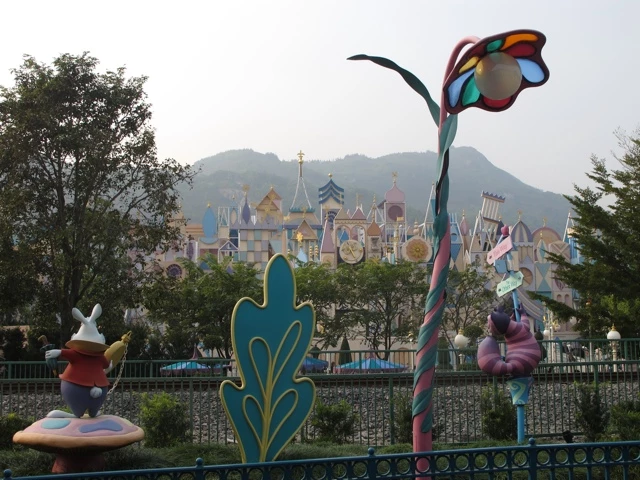
Instead of looking at the huge New Year fireworks display with thousands of other people, we opted for the cozier option in the Swiss Chalet. With Kafi Luz we celebrated the New Year. So far away from home I have never celebrated New Year's Eve. Anyone who comes to Hong Kong, I can highly recommend a visit to Max at the Swiss Chalet. Thank you Max for the great hospitality.
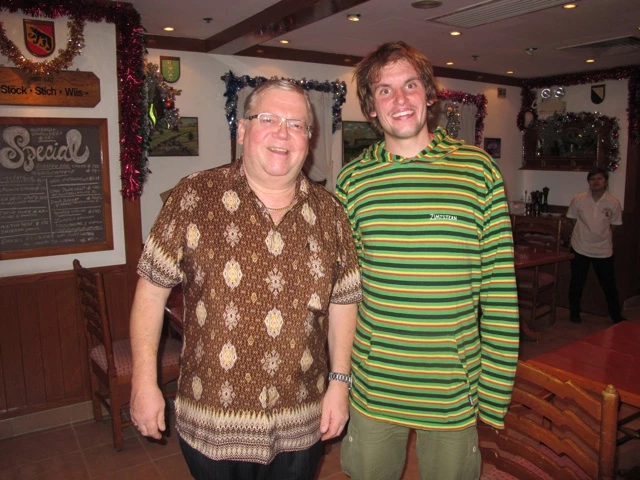
First we drove the next day with the Central-Mid Level Hillside escalator, the longest in the world up to the Botanical and Zoological Gardens. This did not impress us much and so we were soon at the valley station of the Peak route.
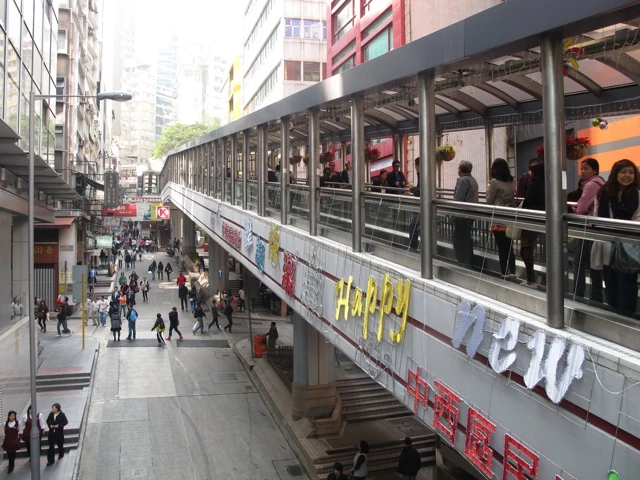
The funicular takes you from Central to the 552m high Victoria's Peak in no time. Hong Kong's main attraction. From the Peak Tower, you can walk along a 3.5-kilometer circuit while enjoying the view of the city. Especially the view at night from the Skyterrasse was sensational for me.
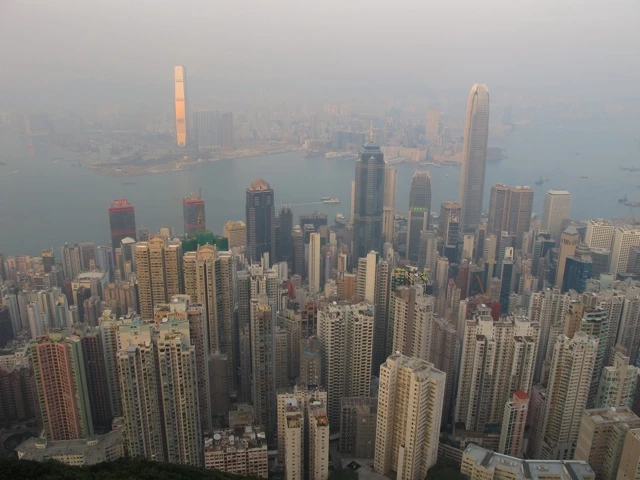
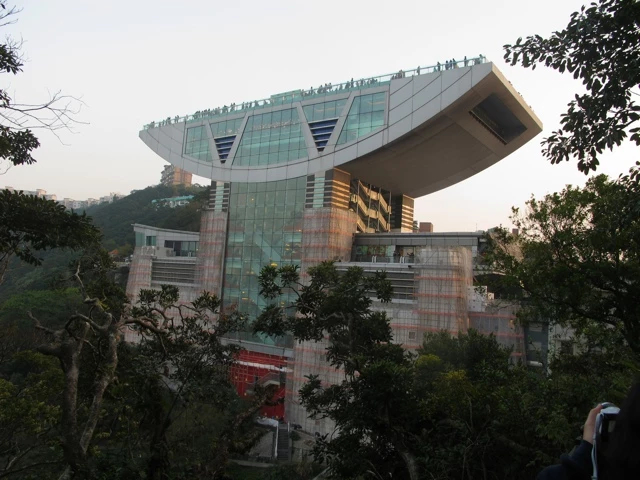
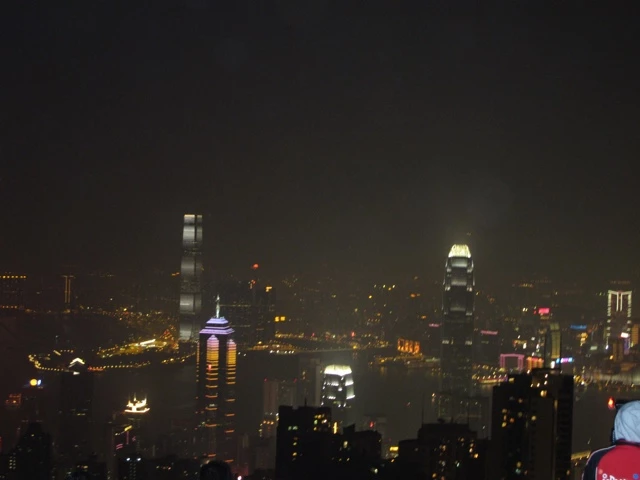
The last day we spent together with a trip to the Ocean Park. In addition to a large aquarium you can also visit a panda and a rainforest hall. For me, this was a nice end to our ten days together in Hong Kong.
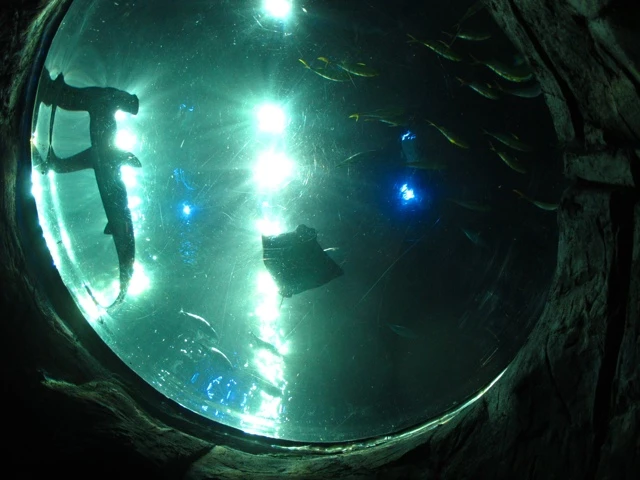
After a last dinner in the hotel came the moment of farewell. The tears were pouring down. Many thanks Mami, Pia and Dominic for the great time in Hong Kong!
The Chinese left me the next day easily back to their country and my bike waited well in the youth hostel in Guangzhou. After almost a month of recovery, we are now heading west. Always nice in the heat. A big thank you at this point also to all the beautiful New Year's wishes. Happy New Year!
